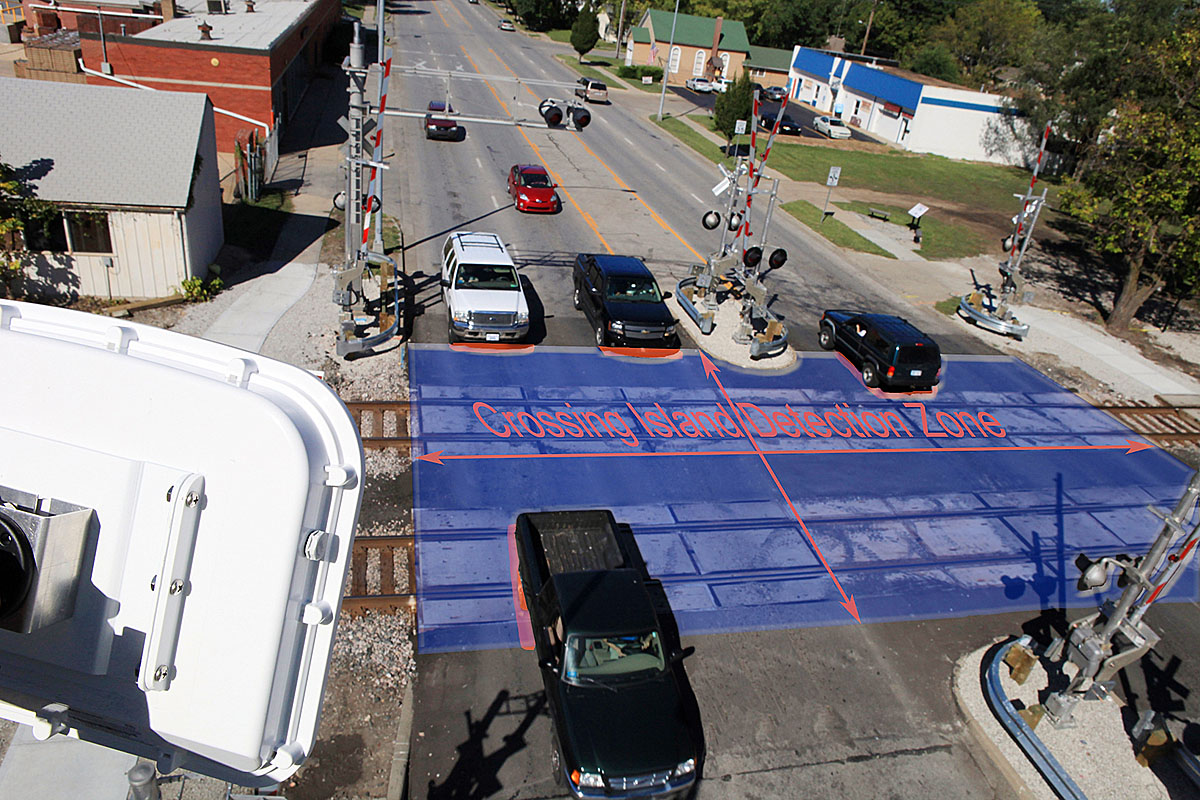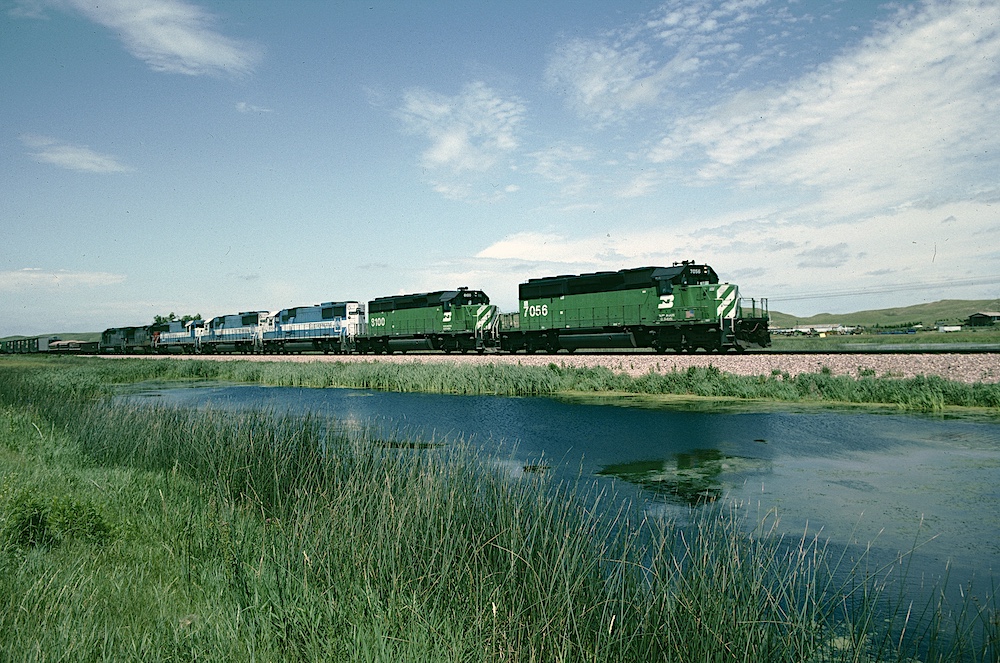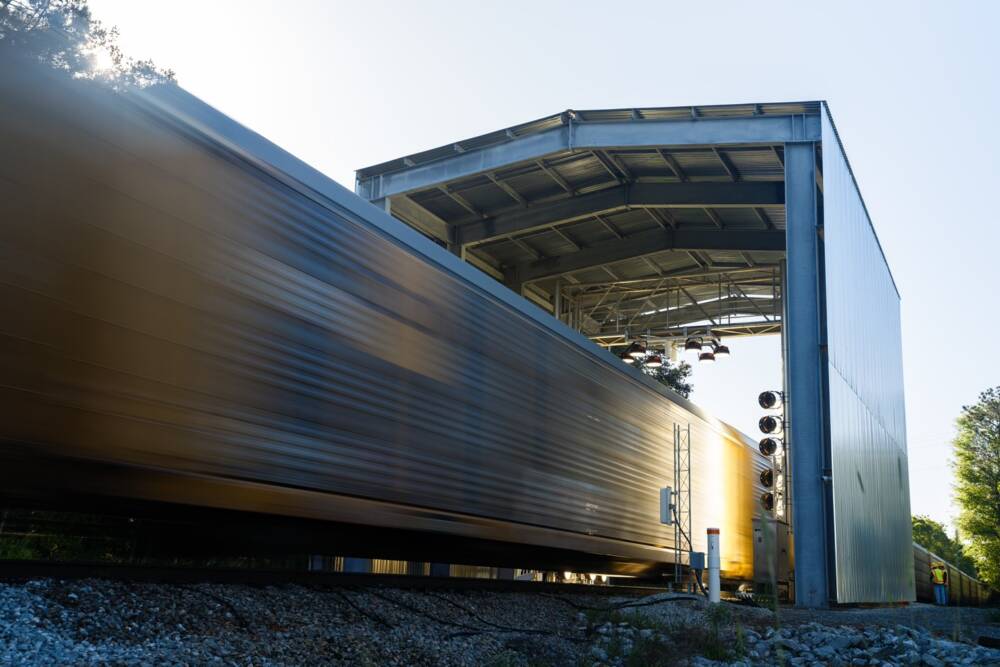Since the dawn of railroading, one of the most common threats to the safe passage of trains has been grade crossing collisions or blockage of the right-of-way by other means – either someone’s trying to beat a train, a vehicle becomes disabled on or near tracks, or careless drivers run into the side of a train.
According to Sam Alibrahim, chief of signal train control and communication for FRA’s Office of Research and Development, the technology that makes Intelligent Grade Crossings viable is part of a larger federal Department of Transportation project called IntelliDrive, which will warn motorists of dangerous road conditions, congestion, or accidents via in-vehicle audio and visual prompts.
IntelliDrive and derivative programs like Intelligent Grade Crossings are all part of the Department of Transportation’s Intelligent Transportation Systems Program, a major push to use sophisticated sensor and communications technologies to create more-efficient and user-friendly highway, rail, and transit systems.
“Our interest in it is where the streets meet the railroad,” Alibrahim says. “We have [funding] to prototype a system that will bring approaching train information inside the vehicle, to the driver. [It’s] like any piece of information, such as GPS, you find readily available in cars. We’re integrating arrival information – nothing complicated like train speed – just telling the driver a train is approaching in a visual and audio-type warning.”
The systems will need a newer car with built-in Global Positioning Satellite technology or an aftermarket GPS made by manufacturers such as TomTom or Garmin to receive the information, although agreements with the manufacturers have yet to be formalized.
Alibrahim noted Intelligent Grade Crossings will do more than just add another level of safety at crossings already equipped with flashers and gates. Hundreds of roads and streets approach grade crossings at oblique angles, greatly reducing motorists’ ability to see trains or warning lights and act appropriately.
“Quite often, streets are parallel to the tracks and then suddenly turn 90 degrees and cross; visibility is not that great,” he says. “We feel that this system will give additional warning of an approaching train. Right now, if you have one of these [GPS] systems you actually see the layout of the track on the display, but we want to have a geo-fence around the crossing for the approaching car.”
Arguably the greatest challenge, though, will be to enable the system to differentiate between cars entering a grade crossing and others nearby that are taking another route.
“Obviously we don’t want to give a false warning for a car that’s not going to cross the track [but] the car with the appropriate trajectory toward the track will be issued the warning of the train,” Alibrahim says.
The ITS standards were to be integrated into the Positive Train Control system Congress mandated for railroads in 2008, but the PTC engineers are designing today will only overlay existing signal systems.
The next-generation PTC, however, will enable a locomotive engineer to see data from local street/highway traffic management systems indicating a car or other object is blocking a grade crossing ahead. Hardware such as optical and infrared detection cameras and radar will make monitoring of the grade crossing “island” (the area of the road where it crosses the railroad) possible as a train is approaching.
Alibrahim is quick to point out that the technology to make grade crossings safer for motorists already exists, however, so the drive to make Intelligent Grade Crossings available for municipalities continues regardless of PTC integration.
“With current technology we can detect the approaching train and calculate its speed; these are microprocessor-based crossing controllers that have been in existence quite a while,” he says. “The information is right there at a crossing-control shelter, so we just need to broadcast it via a short-range communications system.”
In terms of real-world application of Intelligent Grade Crossing technology, Alibrahim says some states are more active in terms of implementing advanced safety technology than others, while another factor among states’ showing an interest in Intelligent Grade Crossings is high-speed rail. So far, Illinois, Michigan, Alaska, and North Carolina are among the frontrunners to show an interest in and test the grade-crossing system.
“We can develop the technology and perfect it, but we cannot force anybody to use it,” he says. “We have a lot of outreach programs through training and conferences [to] show these products to state and local authorities, but it’s up to their interest how fast and where it will be deployed.”
This story originally appeared in the August 2011 issue of Trains Magazine.















Eliminating busy grade crossings, especially on lines used by passenger trains, should be a national priority. The daily carnage from grade crossing accidents is simply unacceptable. There are few infrastructure projects that would result in the same level of immediate safety benefits to the public as elimination of grade crossings.
with increased speed on passenger trains, grade crossing should become out dated. like our freeway system with overpasses seems to be the way to go in the future.